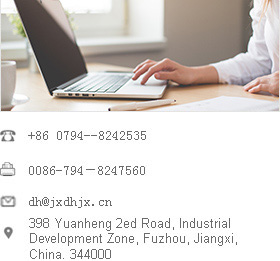
- DHP419 Series of PP Yarn Stretching Machine
- DH419D Series PP FDY Multifilament Spinning Machine HT
- DHP418 Series PP FDY Multifilament Spinning Machine MT
- DHKV 1235-12 Polyester POY Spinning Line
- DHPE Ultra High Molecular Weight Polyethylene Yarn Spinning Equipment
- DHTA Aramid 1414 Yarn Spinning Line


In April, the steady foreign trade policy continued to take effect, overseas importers entered the replenishment cycle, the number of orders increased, and the year-on-year base fell, and the decline in textile and apparel exports narrowed significantly by 14 percentage points from the previous month. Among the major markets, China's exports to the United States, ASEAN and the European Union improved, while exports to Japan continued to weaken. The export volume of the four major categories of commodities all increased year-on-year, and export prices continued to decline. Major export provinces Jiangsu and Shandong returned to growth, Xinjiang increased by more than 30% for seven consecutive months, and the decline in exports of other provinces and cities narrowed. In terms of imports, yarn and fabric imports and imports increased, and needle woven clothing import prices rose to drive import growth. Cotton import volume increased, cotton internal and external price difference from negative to positive. From January to April, cumulative textile and garment exports maintained growth, textile exports increased year-on-year, and garment exports remained flat.
At present, the trade data of neighboring economies such as South Korea and Vietnam are gradually improving, indicating that external demand remains solid. At the same time, the Ministry of Commerce and the China Export and Credit Insurance Corporation proposed 30 measures in 6 aspects to vigorously support the high-quality development of trade, the 135th Canton Fair buyers popularity brought orders growth, the China Bureau of Statistics PMI new orders index remained in the range of month-on-month expansion, a number of good factors make the month-on-month growth momentum. In view of the continued decline in the year-on-year base in the next few months, the recovery of external demand and the momentum of quarter-on-quarter growth will be expected to promote the overall export of textile and apparel to return to year-on-year growth.
The recent hype by the US government about "China's overcapacity problem" is worthy of attention, and the false narrative of "excess capacity theory" is mainly aimed at China's emerging industry exports, which may also bring certain pressure and impact on textile and garment exports. This is reflected in the frequent use of countervailing and anti-dumping measures by the US government to restrict the export of Chinese products, encourage trading partners to cancel the most-favored-nation treatment of China, and put pressure on China's manufacturing enterprises by allied countries. In addition, the United States released the results of its review of the 301 tariff on China, and further increased tariffs on electric vehicles, lithium batteries, photovoltaic cells and other products, including textile and garment products such as personal protective equipment. The Red Sea crisis raised international shipping prices; Factors such as the intensification of geopolitical conflicts in the Middle East continue to pressure the development of textile and garment foreign trade.
Declaration: The content of this article is organized from the Internet, and the copyright belongs to the original author; If there is infringement, please inform in time and contact to delete.







